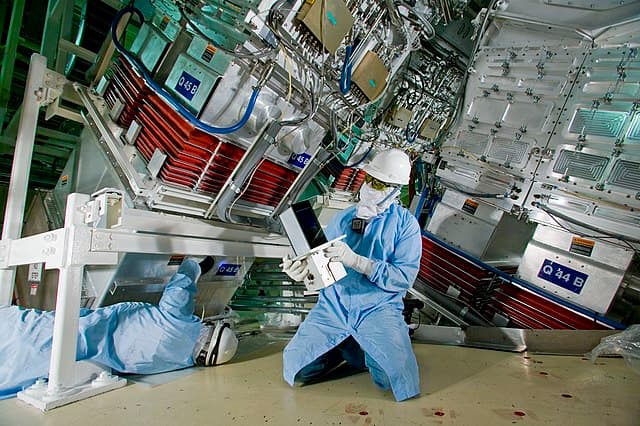The Hottest Story Ever Told?
Herewith a coda to news reports that a breakthrough in controlled nuclear fusion could be announced Tuesday by the Energy Department at its famed Lawrence Livermore laboratory.

News that the Energy Department will make on Tuesday a major announcement, reportedly in respect of controlled fusion, certainly has our attention. The Financial Times says that Secretary Granholm is going to break the news from Lawrence Livermore National Laboratory, where government scientists have for years been pursuing, among other things, a reactor to supply limitless energy using the process that powers the sun. It would be huge.
It happens that the pursuit of a peaceful fusion reactor was one of the first stories we covered when, in the early 1970s and fresh out of the Army, we started as a reporter in the Detroit bureau of the Wall Street Journal. A company called KMS Industries had announced that it could make a working fusion reactor within five years. KMS stock soared, and we raced to Ann Arbor to cover its annual meeting and what turned out to be a riveting story.
KMS was named for its visionary founder, Keeve M. “Kip” Siegel — a short, plump physicist who was a professor of electrical engineering at the University of Michigan. The announcement by KMS was met by much skepticism from scientists allied with the government. They felt KMS’s timetable was unrealistic. Some alleged that KMS was testing ideals that infringed on work the government had been doing. It became quite a feud.
The reactor KMS was hoping to build centered on striking pellets of deuterium with bursts of energy from lasers. As skeptical comments hit the press, KMS stock settled back to where it had been, though the company soldiered on. At one point, we were shown a simulation — purely that — by a computer of what would happen were a deuterium pellet zapped with a laser, creating unimaginable heat.
The simulation, as we recall it, displayed numerical, odometer-like dials showing three metrics. The first was energy going into the pellet, creating levels of heat almost impossible to imagine. The second showed energy coming out of the pellet, and the third displayed elapsed time. Our memory is that the first dial — energy going in — spun like crazy as the theoretical pellet was hit with the laser and heated to temperatures rivaling those in the sun.
The second dial showed barely any energy coming out. Elapsed time loped along at an easy clip. Once fusion occurred, things changed. Energy going in fell to nearly a halt. Energy coming out soared to a mind-boggling degree, much greater than the energy that had gone into heating the pellet. And, most astonishing, elapsed time fell to a crawl, suggesting vast energy being created in a matter of nanoseconds, meaning billionths of a second.
Eventually, the Journal transferred us to Asia, and we lost touch with the fusion story — though we had left with a good deal of admiration for Mr. Siegel, his vision, and his private enterprise approach, not that we lacked admiration for our government’s own approach. One day we read that Mr. Siegel collapsed while testifying before Congress. He died the next day, in March 1975, of what the Ann Arbor News called a stroke.
It didn’t surprise us, given how plump and intense Mr. Siegel was. It did sadden us. Kip Siegel was clearly ahead of his time. Was he, as some alleged, a mere showman? Or was he onto something? Or both? As he was desperately trying to raise money and keep possession of his dream, the government classified his patent applications, which may be what had brought him before Congress pleading for a private-public partnership. Did he die of frustration?
Eventually the government built the National Ignition Facility to pursue controlled laser fusion at Lawrence Livermore Laboratory, where Secretary Granholm is reportedly due to make her announcement. Congratulations could be in order, though we’ll also be thinking of Kip Siegel, who proved at least one thing — the economic theory known as public choice, which holds that the government and private enterprise are inherently competitors.

